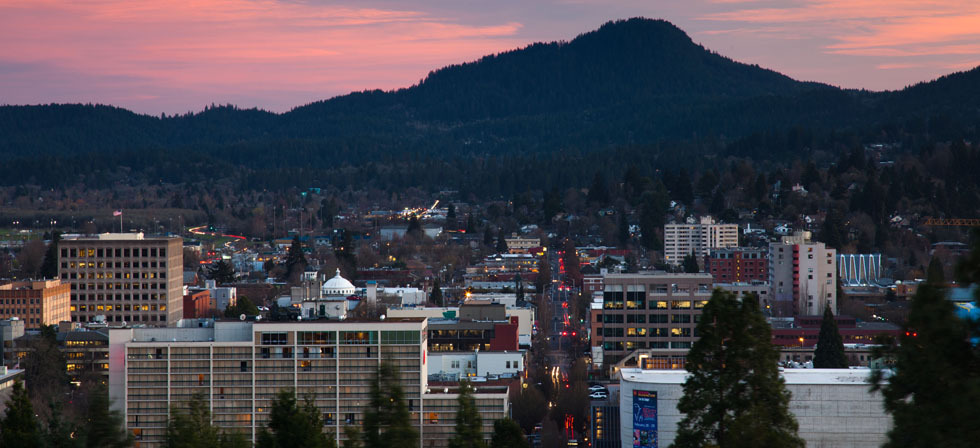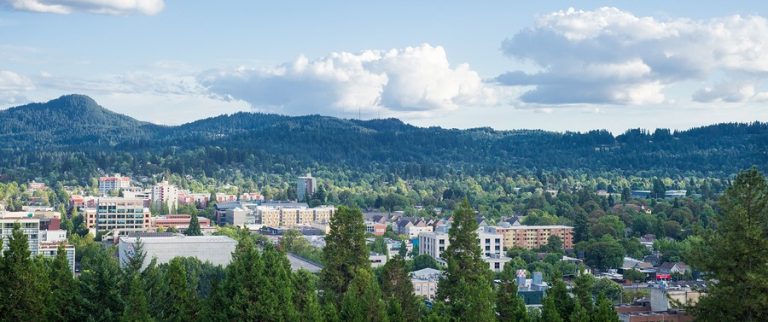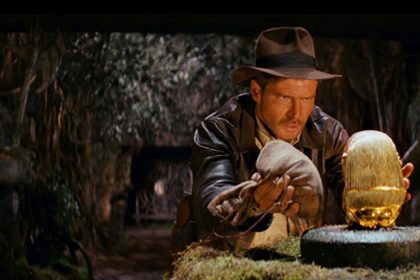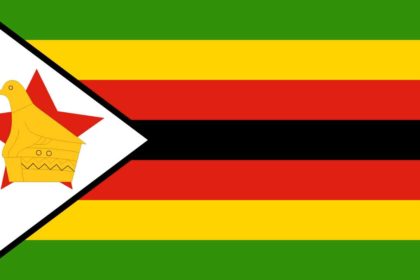Eugene is a city in the U.S. state of Oregon, in the Pacific Northwest. It is at the southern end of the Willamette Valley, near the confluence of the McKenzie and Willamette rivers, about 50 miles (80 km) east of the Oregon Coast. Take a look below for 25 fascinating and awesome facts about Eugene, Oregon, United States.
1. As of the 2010 census, Eugene had a population of 156,185; it is the county seat of Lane County and the state’s third most populous city after Portland and Salem, though recent state estimates suggest its population may have surpassed Salem’s.
2. The Eugene-Springfield, Oregon metropolitan statistical area (MSA) is the 146th largest metropolitan statistical area in the US and the third-largest in the state, behind the Portland Metropolitan Area and the Salem Metropolitan Area.
3. The city’s population for 2019 was estimated to be 172,622 by the U.S. Census.
4. Eugene is home to the University of Oregon, Bushnell University, and Lane Community College.
5. The city is noted for its natural environment, recreational opportunities (especially bicycling, running/jogging, rafting, and kayaking), and focus on the arts, along with its history of civil unrest, protests, and green activism.
6. Eugene’s official slogan is “A Great City for the Arts and Outdoors”.
7. It is also referred to as the “Emerald City” and as “Track Town, USA”.
8. The Nike corporation had its beginnings in Eugene.
9. In 2022, the city will host the 18th Track and Field World Championships.
10. The first people to settle in the Eugene area were known as the Kalapuyans, also written Calapooia or Calapooya. They made “seasonal rounds,” moving around the countryside to collect and preserve local foods, including acorns, the bulbs of the wapato and camas plants, and berries.

11. They stored these foods in their permanent winter village. When crop activities waned, they returned to their winter villages and took up hunting, fishing, and trading.
12. They were known as the Chifin Kalapuyans and called the Eugene area where they lived “Chifin”, sometimes recorded as “Chafin” or “Chiffin”.
13. Other Kalapuyan tribes occupied villages that are also now within Eugene city limits. Pee-you or Mohawk Calapooians, Winefelly or Pleasant Hill Calapooians, and the Lungtum or Long Tom. They were close-neighbors to the Chifin, intermarried, and were political allies.
14. Some authorities suggest the Brownsville Kalapuyans (Calapooia Kalapuyans) were related to the Pee-you. It is likely that since the Santiam had an alliance with the Brownsville Kalapuyans that the Santiam influence also went as far at Eugene.
15. According to archeological evidence, the ancestors of the Kalapuyans may have been in Eugene for as long as 10,000 years.
16. In the 1800s their traditional way of life faced significant changes due to devastating epidemics and settlement, first by French fur traders and later by an overwhelming number of American settlers.
17. French fur traders had settled seasonally in the Willamette Valley by the beginning of the 19th century. Their settlements were concentrated in the “French Prairie” community in Northern Marion County but may have extended south to the Eugene area. Having already developed relationships with Native communities through intermarriage and trade, they negotiated for land from the Kalapuyans.
18. By 1828 to 1830 they and their Native wives began year-round occupation of the land, raising crops and tending animals. In this process, the mixed race families began to impact Native access to land, food supply, and traditional materials for trade and religious practices.
19. In July 1830, “intermittent fever” struck the lower Columbia region and a year later, the Willamette Valley. Natives traced the arrival of the disease, then new to the Northwest, to the U.S. ship, Owyhee, captained by John Dominis. “Intermittent fever” is thought by researchers now to be malaria.
20. According to Robert T. Boyd, an anthropologist at Portland State University, the first three years of the epidemic, “probably constitute the single most important epidemiological event in the recorded history of what would eventually become the state of Oregon”. In his book The Coming of the Spirit Pestilence Boyd reports there was a 92% population loss for the Kalapuyans between 1830 and 1841.

21. This catastrophic event shattered the social fabric of Kalapuyan society and altered the demographic balance in the Valley. This balance was further altered over the next few years by the arrival of Anglo-American settlers, beginning in 1840 with 13 people and growing steadily each year until within 20 years more than 11,000 American settlers, including Eugene Skinner, had arrived.
22. As the demographic pressure from the settlers grew, the remaining Kalapuyans were forcibly removed to Indian reservations. Though some Natives escaped being swept into the reservation, most were moved to the Grand Ronde reservation in 1856. Strict racial segregation was enforced and mixed race people, known as Métis in French, had to make a choice between the reservation and Anglo society. Native Americans could not leave the reservation without traveling papers and white people could not enter the reservation.
23. Eugene Franklin Skinner, after whom Eugene is named, arrived in the Willamette Valley in 1846 with 1,200 other settlers that year. Advised by the Kalapuyans to build on high ground to avoid flooding, he erected the first Anglo cabin on south or west slope of what the Kalapuyans called Ya-po-ah.
24. The “isolated hill” is now known as Skinner’s Butte. The cabin was used as a trading post and was registered as an official post office on January 8, 1850.
25. At this time the settlement was known by Anglos as Skinner’s Mudhole. It was relocated in 1853 and named Eugene City in 1853. Formally incorporated as a city in 1862, it was named simply Eugene in 1889. Skinner ran a ferry service across the Willamette River where the Ferry Street Bridge now stands.




